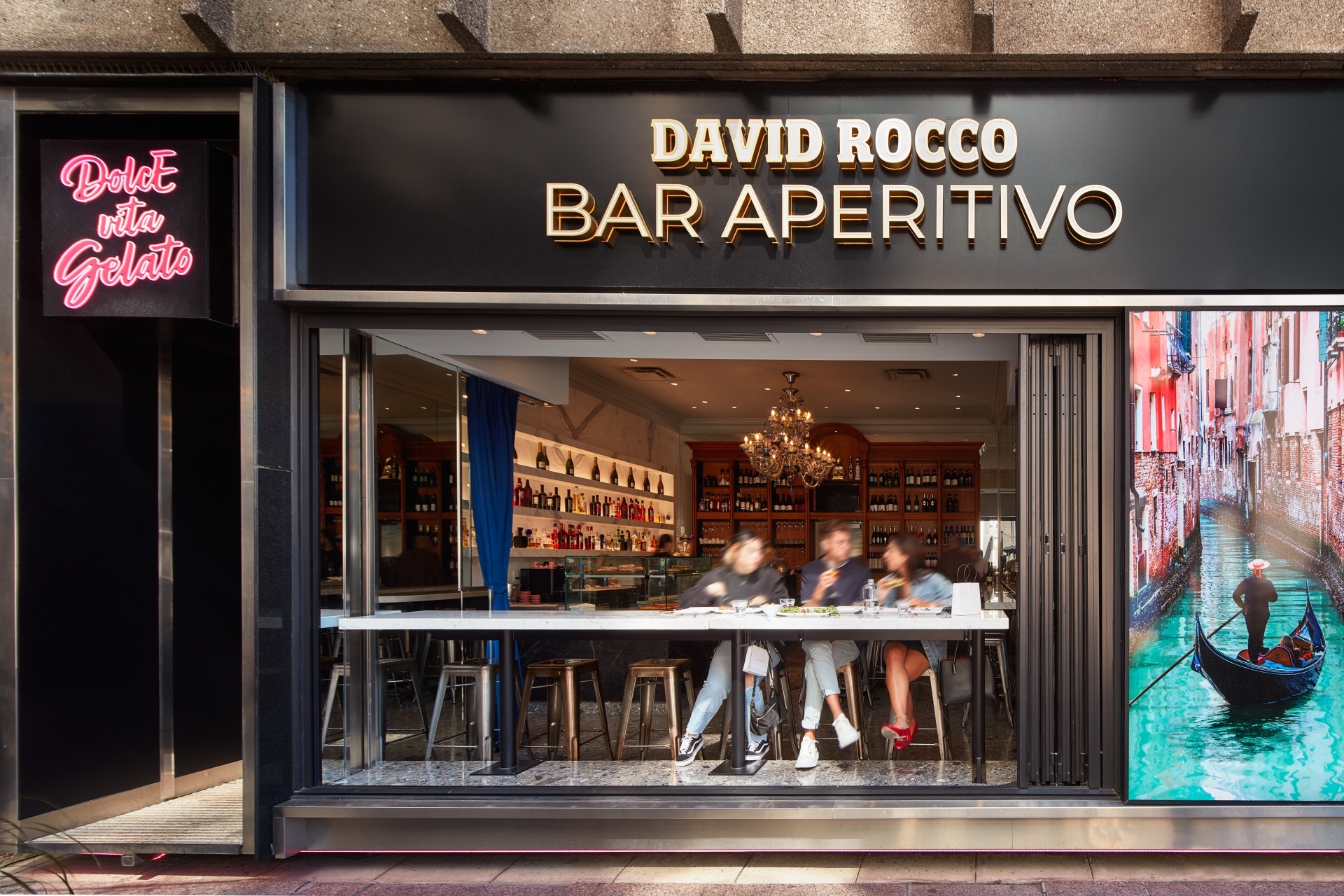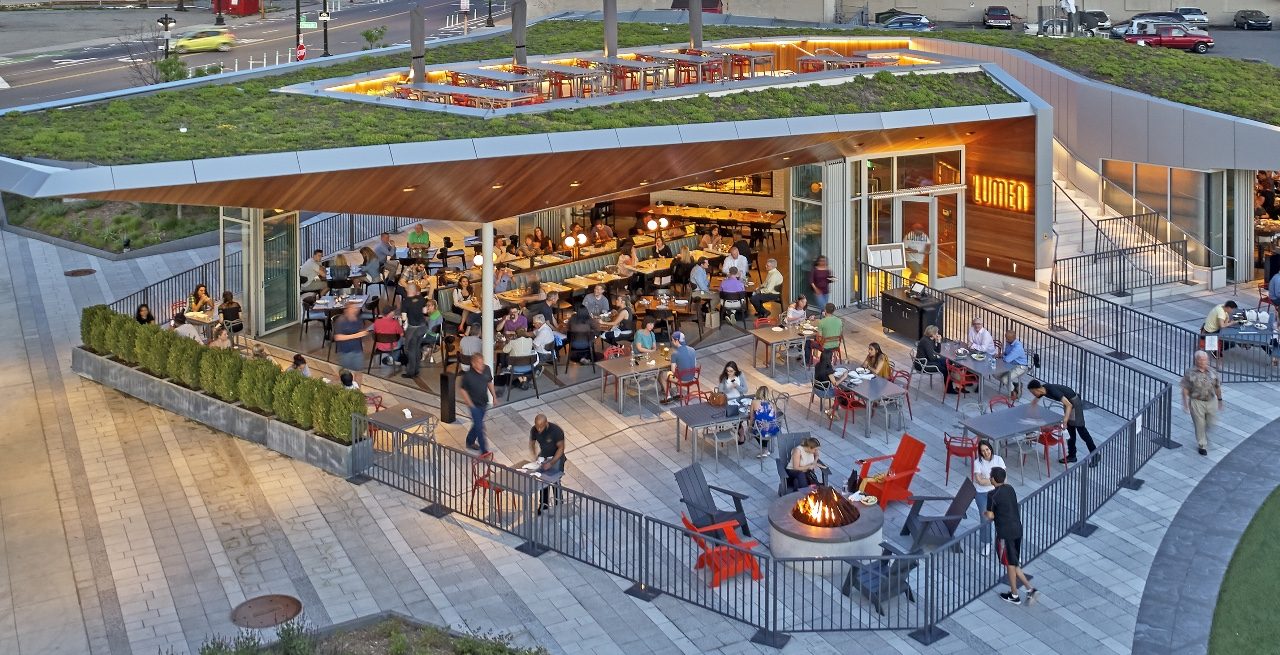A Menu with a View
2 Min Read By MRM Staff
Restaurants can leverage panoramic views, natural light, and fresh air to create immersive and memorable moments that seamlessly connect interior and exterior spaces.
Lumen Detroit's design, top photo, featuring sliding glass wall systems, allowed it to thrive and remain open during the pandemic by connecting the interior to Beacon Park. The operable walls, rising over 10 to 12 feet, create an expansive, indoor-outdoor space, adding 1,200 sq ft of seating. The glass perimeter walls completely open on both halves of the building, the bar, and the dining room.
“Ambiance is rooted in how a space relates to its surroundings,” explained Liz Snyder, Director of Product Marketing and an industry leader at NanaWall, which produces operable glass walls for commercial and residential use. “Operable glass walls bring in natural light, fresh air, and energy, creating an environment that shifts with time of day or season. Open, the restaurant flows into the landscape or cityscape. Closed, it maintains comfort while preserving transparency, allowing guests to feel immersed in the unique experience of time and place.”
Architect Ted Touloukian added that the space seems like a roof with no walls at all with subtle references to Detroit’s history with both the automotive and music industries.
“The flush sill details and the ability to have a pass door were also significant selection factors, as was energy efficiency. The system opened up the building to make great connections to the park and to the historic buildings downtown. We lift the building up and create complete reciprocity between the building and the outdoors. The perimeter of the building disappears. There is no interior or exterior, it’s all one space.”
Snyder noted that the challenge in projects like this is making the interior and exterior feel connected without one overpowering the other.
“Fixed walls often block that connection, while folding and sliding glass walls offer a flexible solution. They frame the view or outdoor environment, open wide to prioritize indoor-outdoor connection, and then close to maintain comfort. The adaptability lets the view support the dining concept rather than compete with it.”

Chef David Rocco’s Bar Aperitivo in downtown Toronto features a NanaWall flexible bifold glass wall system, which allows the restaurant to transition between indoor and outdoor seating. It enables patrons to enjoy fresh air, natural light, and 360-degree views of downtown, creating an immersive dining experience.
“Here in Canada, not having a patio can be the difference between life or death for an establishment due to our short summers,” said Rocco. “Everyone wants to be out or in an environment that opens up in those summer months.”
Today's guests want memorable dining experiences, added Snyder.
“Folding and sliding glass walls make spaces dynamic, opening to expand into the outdoors or reveal a view at the right moment. This sense of transformation elevates the meal into an experience that connects guests to both the food and the environment.”

